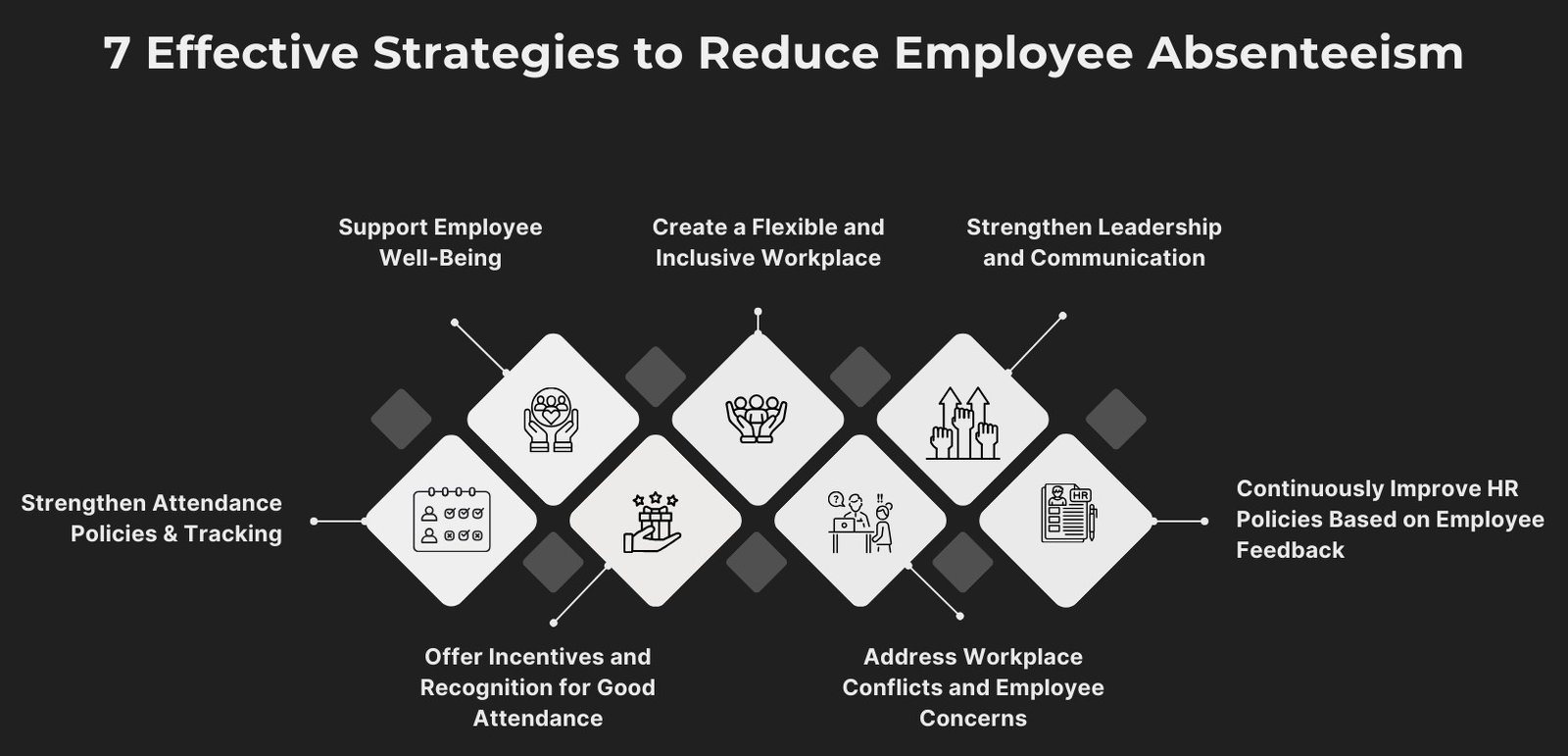Employee absenteeism—frequent, unplanned absences from work—poses a significant challenge for organizations, impacting productivity, team morale, and operational efficiency. In the Indian context, addressing absenteeism requires a nuanced approach that considers cultural, social, and economic factors unique to the region. Understanding the Causes of Absenteeism in India Several factors contribute to employee absenteeism in India: Health …
Employee absenteeism—frequent, unplanned absences from work—poses a significant challenge for organizations, impacting productivity, team morale, and operational efficiency. In the Indian context, addressing absenteeism requires a nuanced approach that considers cultural, social, and economic factors unique to the region.
Understanding the Causes of Absenteeism in India
Several factors contribute to employee absenteeism in India:
Health Issues: Employees may face health challenges, including chronic illnesses or lack of access to quality healthcare, leading to increased absenteeism.
Family Responsibilities: Cultural expectations often place family obligations, such as caring for children or elderly parents, on employees, resulting in absences.
Workplace Environment: High job demands, lack of support, and poor workplace relationships can lead to disengagement and absenteeism.
Commuting Challenges: In urban areas like Delhi, Mumbai or other metro cities long and stressful commutes due to traffic congestion can contribute to employee fatigue and absenteeism.
Strategies to Reduce Absenteeism (with Practical Applications)
1. Promote Employee Well-being
How It Helps: Wellness programs address health concerns proactively, improving employee morale and physical fitness. For example, conducting bi-annual health camps for preventive check-ups can help detect issues early.
Application: Partner with healthcare providers to offer benefits such as online consultations, yoga sessions, and subsidized health insurance.
2. Offer Flexible Work Arrangements (If possible)
How It Helps: Flexible hours or remote work options allow employees to manage personal commitments, reducing stress and fatigue from long commutes. For instance, a hybrid work policy can keep productivity high while accommodating employees’ needs.
Application: Allow employees to adjust work hours during peak traffic times or offer “work-from-home Wednesdays” to break the monotony.
3. Recognize and Reward Good Attendance
How It Helps: Acknowledging consistent attendance fosters a culture of accountability and motivation. Simple gestures like monthly shoutouts or a day off for exemplary attendance can inspire others to follow suit.
Application: Introduce an “Employee of the Month” award focused on attendance and include small incentives like recognition or vouchers or gift cards.
4. Address Workplace Issues Promptly
How It Helps: Resolving issues such as workload imbalance or team conflicts prevents disengagement. If an employee feels overwhelmed, they are more likely to skip work. Regular one-on-one check-ins help identify and resolve these issues.
Application: Create anonymous feedback channels and conduct team-building exercises to strengthen workplace relationships.
5. Leverage Employee Assistance Programs (EAPs)
How It Helps: EAPs provide support for stress, addiction, and family problems, reducing personal challenges that can impact attendance. For instance, offering free counseling sessions helps employees manage stress better.
Application: Partner with mental health professionals and promote the EAP benefits through internal communication channels.
6. Monitor and Analyze Attendance Data
How It Helps: Data insights help identify patterns such as high absenteeism on Mondays or after payday. For example, if data shows employees frequently calling in sick after heavy project deadlines, it may indicate burnout.
Application: Use analytics tools to segment attendance by department or role and design targeted interventions like wellness breaks or additional support during peak times.
7. Improve Workplace Culture
How It Helps: A positive culture with open communication and mutual respect reduces burnout and disengagement. Employees who feel valued are more likely to stay committed to their roles.
Application: Celebrate milestones like birthdays or work anniversaries and encourage team bonding through outings or virtual coffee sessions.
8. Provide Training for Managers
How It Helps: Well-trained managers can detect early signs of disengagement and intervene effectively. For instance, a manager noticing an employee withdrawing from group activities might offer personalized support.
Application: Conduct workshops on empathy, conflict resolution, and active listening for team leads.
9. Focus on Diversity and Inclusion
How It Helps: When employees feel included and respected regardless of their background, absenteeism decreases. A diverse workforce also brings varied perspectives, enriching team collaboration.
Application: Form diversity committees and celebrate cultural events to foster inclusivity.
Conclusion
Reducing employee absenteeism in India requires a holistic approach that considers the diverse factors influencing attendance. By implementing supportive policies, promoting well-being, and fostering a positive workplace culture, organizations can enhance employee engagement and reduce absenteeism, leading to improved productivity and organizational success.
You can reach out to us at Catalyst Psyche Inc (mindverse@catalystpsycheinc.com or 9773772062) for an exploratory call if you are facing challenge with absentism and how we can help your organization.






